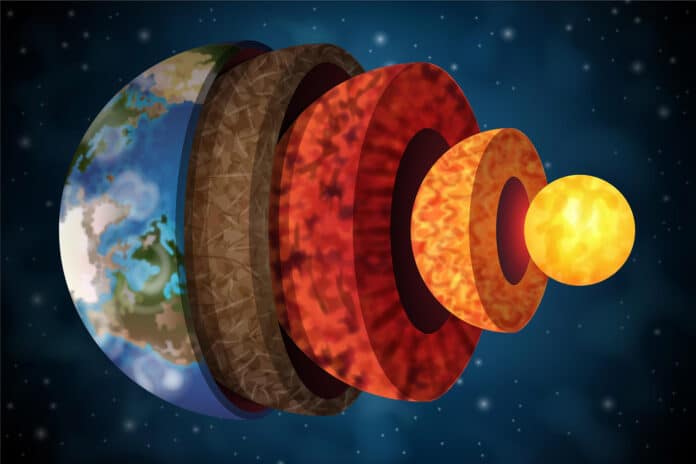Earth’s inner core acquires texture as it solidifies within the fluid outer core. It looks like a solid metal ball, a “planet within a planet.” Its existence makes life on the surface possible.
However, it remains a mystery: How Earth’s inner core formed, grew, and evolve?
A team of University of Utah-led researchers is seeking to uncover the answer.
Seismic waves from earthquakes can be used to image the texture, or fabric, of the inner core and gain insight into the history and evolution of Earth’s core. But, scientists suggest that the inner core is not the homogenous mass that was once assumed: it’s more like a tapestry of different “fabrics.”
This discovery opens a window into the deepest reaches of Earth.
Guanning Pang, a former doctoral student in the U’s Department of Geology & Geophysics, said, “For the first time, we confirmed that this inhomogeneity is everywhere inside the inner core.”
This study used a unique dataset from a global network of seismic arrays installed to find nuclear explosions. This information has aided investigations into meteor explosions, the location of a colony of pygmy blue whales, weather forecast advancements, and the formation of icebergs.
The interior of the earth is much more challenging to study. The finest tools for detecting this hidden region are seismic waves from earthquakes that go from the planet’s thin crust and vibrate through its rocky mantle and metallic core.
Koper said, “The planet formed from asteroids accreting [in space]. They’re running into each other, and you generate a lot of energy. So the whole planet, when it’s forming up, is melting. It’s simply that the iron is heavier, and you get what we call core formation. The metals sink to the middle, and the liquid rock is outside and freezes over time. All the metals are down there because they’re heavier than the rocks.”
Koper’s lab has examined seismic data sensitive to the inner core for the past few years. The duration of the day may have changed from 2001 to 2003 due to differences between Earth’s rotation and the inner core, according to a prior study led by Pang.
Iron, nickel, and a few other elements comprise most of the Earth’s core, around 4,300 miles across. The inner core is solid, and the outside body is still liquid.
Koper said, “It’s like a planet within a planet that has its rotation, and it’s decoupled by this big ocean of molten iron.”
“The protective field of magnetic energy surrounding Earth is created by convection within the liquid outer core, which extends 2,260 kilometers (1,795 miles) above the solid core. The molten metal rises above the solid inner core, cools as it approaches Earth’s rocky mantle, and sinks. This circulation generates the bands of electrons enveloping the planet. Without a solid inner core, this field would be much weaker, and the planetary surface would be bombarded with radiation and solar winds that would strip away the atmosphere and render the surface uninhabitable.”
The U team used seismic data collected from 20 seismometer arrays located around the globe, including two in Antarctica, for the new study. Outside of Pinedale, Wyoming, is where Utah is most nearby. As parabolic antennae work, these sensors are placed in holes up to 10 meters deep in granite formations and configured in patterns to focus the signals they receive.
Pang studied seismic waves from 2,455 earthquakes with magnitudes greater than 5.7, or around the same as the quake that shook Salt Lake City in 2020. How these waves reacted with the inner core mapped its interior structure. Smaller earthquakes don’t produce waves that are powerful enough for the study.
Koper said, “This signal that comes back from the inner core is tiny. The size is about on the order of a nanometer. What we’re doing is looking for a needle in a haystack. So these baby echoes, and reflections are very hard to see.”
Journal Reference:
- Pang, G., Koper, K.D., Wu, SM. et al. Enhanced inner core fine-scale heterogeneity towards Earth’s center. Nature 620, 570–575 (2023). DOI: 10.1038/s41586-023-06213-2
